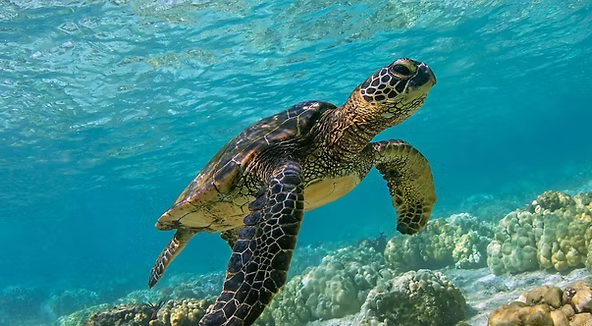Green Sea Turtles: Gentle Giants of the Ocean
The green sea turtle is the largest hard-shelled marine turtle. Found worldwide, they breed in about 80 nations and reside along the coasts of over 140 others. Historically, they were hunted for their fat, flesh, and eggs, causing population declines. While many nations, including the United States, now prohibit hunting and egg collection, threats from illegal trade, bycatch, habitat loss, vessel strikes, and climate change continue to endanger them.
Diet and Behavior
- Adult green turtles are primarily herbivorous, feeding on sea grasses and algae.
- Younger green turtles consume invertebrates such as jellyfish, crabs, and sponges.
- They often warm themselves by swimming near the surface; East Pacific green turtles also bask on land.
- They are occasionally seen sunning alongside seals and albatrosses.
Habitat and Range
Green turtles inhabit tropical and temperate waters of the Pacific, Atlantic, and Indian Oceans, as well as the Mediterranean Sea. In the U.S., they are found from Texas to Maine, including the US Virgin Islands and Puerto Rico, and in Florida’s key feeding grounds like Indian River Lagoon, Florida Bay, and the Dry Tortugas. In the Pacific, they occur in California, Hawaii, American Samoa, Guam, and the Northern Territory.
Reproduction and Lifespan
- Green turtles can live up to 70 years, reaching sexual maturity at 25–35 years.
- Females return every 2–5 years to the same beach where they hatched to lay eggs.
- Each nest contains roughly 110 eggs, and females may nest multiple times per season.
- Hatchlings emerge after two months of incubation and orient seaward toward the brightest horizon.
Conservation
Green sea turtles have declined by 90% over the past 50 years. Threats include climate change, habitat loss, diseases like fibropapillomatosis, light pollution, and overhunting. They are protected by national and international laws, and population monitoring is conducted by agencies like NOAA. Restoration projects are ongoing in regions such as the Gulf of Mexico to preserve and enhance nesting sites.

